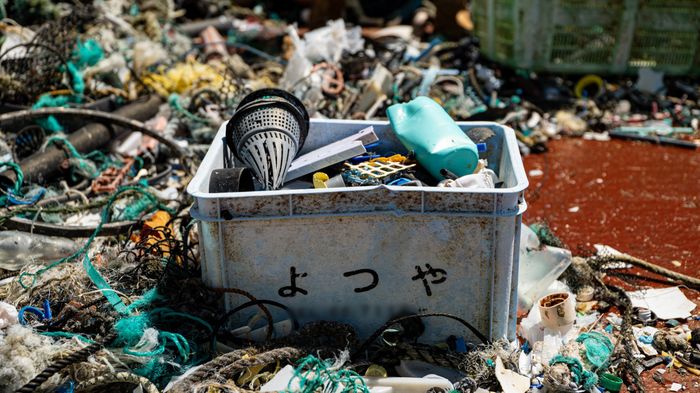
Over 75% Of Plastic in Great Pacific Garbage Patch Originates From Fishing
Back to press-
STUDY IN ‘SCIENTIFIC REPORTS’ INDICATES 75% TO 86% OF GPGP PLASTIC ATTRIBUTABLE TO OFFSHORE FISHING AND AQUACULTURE ACTIVITIES
-
MAJORITY OF GPGP FISHING GEAR ORIGINATES FROM THE U.S., CHINA, JAPAN AND THE KOREAN PENINSULA
-
RESULTS EMPHASIZE THE ESSENTIAL ROLE OF THE FISHING INDUSTRY AND MAJOR FISHING NATIONS IN OCEAN CLEANING
-
PLASTIC EMISSIONS FROM RIVERS REMAIN BY FAR LARGEST SOURCE OF PLASTIC POLLUTION INTO GLOBAL OCEAN
(Rotterdam — September 1, 2022) The Ocean Cleanup has today published new research in the journal Scientific Reports showing that the Great Pacific Garbage Patch (GPGP) is largely composed of fishing-related plastic waste, with 75% to 86% of all plastic waste in the GPGP identified as coming from offshore fishing activity.
Analysis of over 6,000 plastic objects also found that major industrialized fishing nations (including the United States, China, Japan and Korea) are the principal producers of the fishing waste found in the GPGP, an area three times the size of France and the world’s largest accumulation of floating ocean plastic.
At a global level, emissions from rivers remain by far the largest source of plastic pollution into the oceans. However, specifically for the GPGP, this is not the case, and this confirms that the GPGP requires an approach not only involving cleanup and interception; this ‘other source’ of GPGP pollution – i.e., plastic originating from fishing activities – must also be tackled.
The Ocean Cleanup conducted the research on plastic objects and fragments captured in the GPGP during cleaning operations of its System 001/B solution in 2019. Researchers painstakingly investigated the origins, sources and ages of these objects to create the most comprehensive picture of GPGP plastic so far presented, building on The Ocean Cleanup’s previous research, conducted in 2018.
“This research significantly expands our understanding of the Great Pacific Garbage Patch,’ said Matthias Egger, Ocean Plastic Researcher at The Ocean Cleanup. ‘In order to solve this problem we need to understand it, and identifying the origins of GPGP plastic is essential to our cleanup efforts, and the efforts of other organizations, to reduce this other source of pollution.”
“To stop the inflow of plastic into our oceans, addressing river emissions – the largest source – must remain core priority” said Boyan Slat, founder and CEO of The Ocean Cleanup. “However, to ensure our work to clean up the GPGP is truly sustainable, fishing gear inputs must also be stopped. We hope our latest study will enable organizations and the fishing industry itself to address this other source of plastic pollution to the GPGP.”
###
DOWNLOADS
Photos, illustrations, and videos on The Ocean Cleanup can be found in the general media gallery.
PRESS CONTACTS FOR THE OCEAN CLEANUP
CFF Communications, Amsterdam
Niels Broekhof
E: press@theoceancleanup.com
T: +31 (0)6 30 37 49 30
U.S. Media Representative, San Francisco
Alan Dunton
E: adunton@shiftcomm.com
T: +1 415-290-8219
About The Ocean Cleanup
The Ocean Cleanup is a non-profit organization that develops and scales technologies to rid the world’s oceans of plastic. They aim to achieve this goal by stemming the inflow of plastic into our oceans and cleaning up what has already accumulated out there. For the latter, The Ocean Cleanup is developing large-scale systems to efficiently concentrate the plastic for periodic removal. This plastic is tracked and traced through DNV’s chain of custody model to certify claims of origin when recycling it into new products. To curb the tide via rivers, The Ocean Cleanup has developed Interceptor™ Solutions to halt and extract riverine plastic before it reaches the ocean. Founded in 2013 by Boyan Slat, The Ocean Cleanup now employs a broad and multi-disciplined team of approximately 130. The foundation is headquartered in Rotterdam, the Netherlands. For more information, visit theoceancleanup.com and follow @theoceancleanup on social media.

